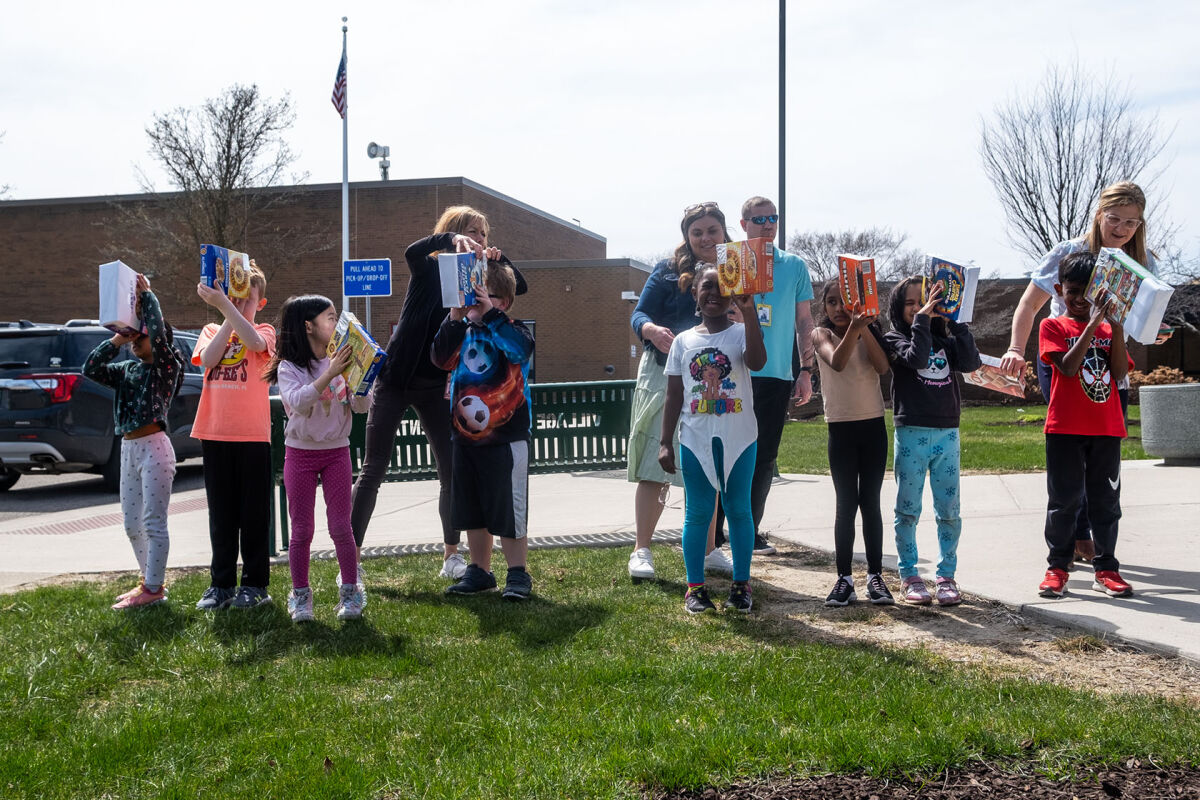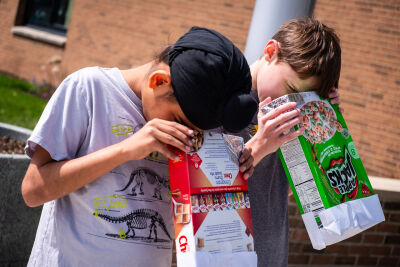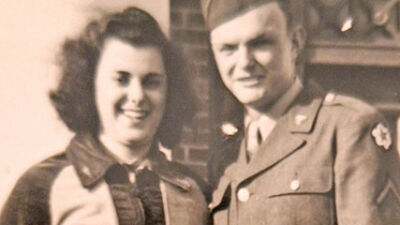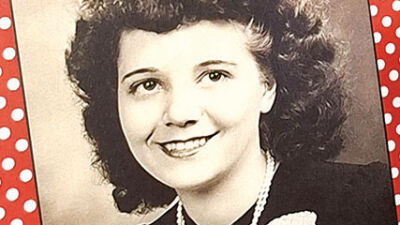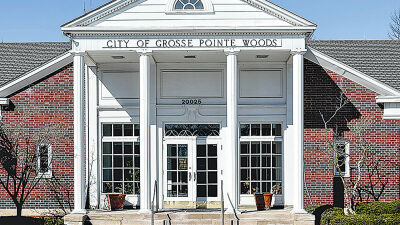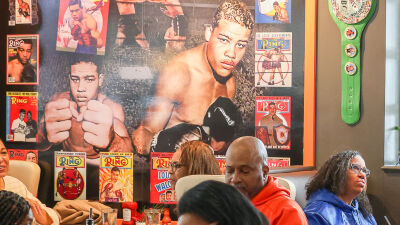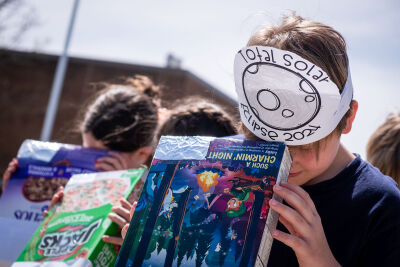
Village Oaks Elementary fourth-grader Michael Tuomi uses a pinhole viewer made out of a cereal box to safely watch the solar eclipse Monday, April 8, 2024, in Novi.
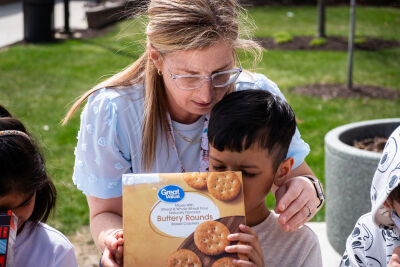
Village Oaks Elementary Principal Katy Dinkelmann helps second grader Vyom Singh use a cereal box that was made into a pinhole viewer to safely view the solar eclipse.
Elementary school students and staff members in the Novi Community School District could be seen during the afternoon April 8 attempting to view the nearly total eclipse through homemade projectors constructed from cereal and cracker boxes.
“We had this box with, like, a pretty big hole on the top and a little dot, and we weren’t looking at it (the sun), but instead we were looking the exact opposite way so you could see it and make it not burn our eyes,” explained Zachary MacClaren, a fourth grader at Village Oaks Elementary in Novi.
The projectors consisted of cardboard boxes with one hole cut out on the left side of one end and another hole cut out on the right side with a swatch of foil cut out over it and a pin hole in the center of the foil. In order to view the eclipse, students and staff members placed the sun at their back and angled the box so that they could see a reflection of the eclipse on the opposite side of the box through the uncovered hole.
“Obviously, you want to be able to view the eclipse safely and as a district we decided that the safest way — and one way we could be consistent K-12 — is that we are going to go with the indirect viewing method,” said Brian Langley, Novi Community School District K-12 science coordinator in a video explaining the technique.
“This is the safest available method for viewing an eclipse. It is never safe to look directly at the Sun without certified solar viewing glasses and we want to be consistent across the ages of the district,” Superintendent Ben Mainka said in the district newsletter. “Even with certified solar viewing glasses, if they are in some way damaged, the protection they provide may not be sufficient enough to ensure no damage to the eyes.”
Shortly after 2 p.m. April 8, students at Village Oaks Elementary were brought out in small groups to view the eclipse with their teachers and Principal Katy Dinkelman. Teachers continued to bring groups outside until approximately 3 p.m. Some of the students were able to go out twice to see the spectacle through their viewing contraptions.
The boxes had been made ahead of time by the teachers, although a handful of students chose to make their own with the help of their parents.
“Well, we couldn’t really see anything. It was kind of just a light that came in through the foil. So, like, I couldn’t really see the eclipse,” said Aubrey Smith, a fourth grade student at Village Oaks.
“On the first time we saw just this one little white dot, and then on, like, the second time, we saw, like, three of them. Instead of one, there were three. That was when it was dark,’ MacClaren said.
Smith said she thought she would see the shape of the sun and a more detailed image of what she had been told the eclipse would look like. MacClaren said he was expecting to see something similar, but had thought they would be black dots with a yellow outline.
Both children said they still enjoyed the experience and noted the difference in the light and temperature between the two intervals when they were able to go outside.
“When we went outside first, it was warm, and then when we went outside again, it was cooler. So I liked feeling how the weather changed,” Smith said.
“Before it’s, like, so light and hot, but then when it started coming, it feels slightly colder because it’s covering a little bit of the sun,” said MacClaren.
Smith further explained how the light looked during the eclipse.
“It didn’t look like sunset really, no. It kind of was darker. Not like nighttime. It was more so kind of like cloudy, like what you kind of think about when it’s about to storm, like what that looks like,” Smith said.
“It felt like it was 7 or 6 (at night),” MacClaren said.
Along with the boxes, students were able to watch a live feed of the eclipse from NASA in their classrooms.
“We wanted to give every first grader the opportunity to see the pinhole box viewers, so we put our classes together and took turns bringing, like, four kids out at time to use the viewers,” said Jen Smith, a first grade teacher at Village Oaks.
She said there were some children who chose not to go outside, preferring to watch the live feed.
First grade teacher Briana Canedo said that the timing of the eclipse correlated well with their pending first grade curriculum lessons on the phases of the sun and moon. She said that they did some activities to prepare the students for the eclipse.
“They did a project of, like, a spinning wheel to observe how the sun and moon changes as you spin it around,” she said.
Canedo said that she turned off the lights in her classroom during the eclipse so that her students who were inside could observe the sky becoming darker.
Jen Smith said the boxes were really simple and easy to make, but she said they didn’t necessarily provide the best view of the event.
“I can’t say they worked great, but what they saw in it, I think it’s more about the experience of what they think they saw,” Jen Smith said. “We didn’t feel comfortable with having the kids bring in glasses because of the safety factor. But a lot of them just saw the sun coming through the hole, so they would see the white dot and they would say, ‘I see it! I see it!’ And you know we were just excited that they got to see the actual thing.”
She said the kids were really excited when they saw the total eclipse hit Cleveland via the NASA live feed and really seemed to enjoy it.
“Basically, they were excited the whole afternoon. They were excited about the whole experience. Any way that they saw it, they were excited,” Jen Smith said.
 Publication select ▼
Publication select ▼